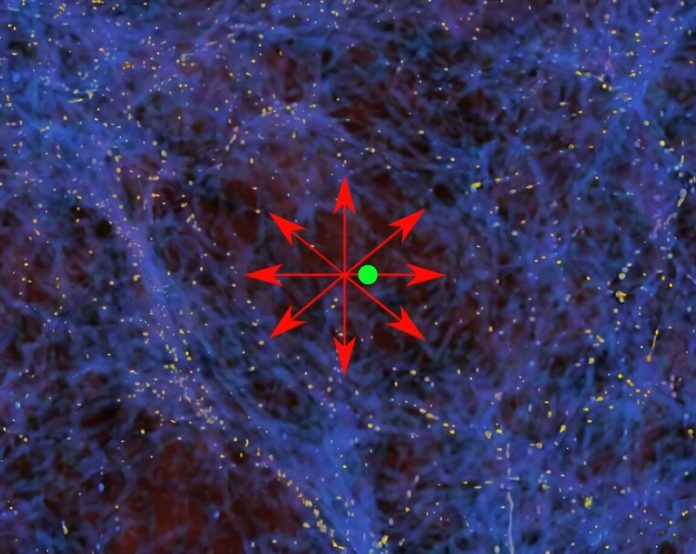
Astronomers now think Earth and our Milky Way galaxy might be sitting in a giant, mysterious “cosmic void”—a huge region of space that is less dense than the rest of the universe.
This surprising idea could help solve one of astronomy’s biggest puzzles: the Hubble tension.
The Hubble tension refers to a mismatch between two ways of measuring how fast the universe is expanding.
When scientists look at the early universe—just after the Big Bang—they get one number.
But when they measure expansion closer to Earth in the modern universe, they get a higher number. This disagreement has puzzled researchers for years.
Dr. Indranil Banik from the University of Portsmouth presented new findings at the Royal Astronomical Society’s National Astronomy Meeting that support the idea of a large local void.
He explained that if our region of space is less dense, gravity would pull matter away from it into denser areas, making our surroundings even emptier over time.
As this happens, the galaxies around us would appear to move away faster—creating the illusion of a faster local expansion rate.
To make this theory work, Earth would need to be near the center of a vast void about a billion light-years wide, and the matter inside it would have to be about 20% less than average. Interestingly, direct galaxy counts suggest that our local universe is less crowded than other regions, which gives some support to the idea.
However, the theory is controversial. According to the standard model of cosmology, matter should be spread out more evenly on such large scales, making the idea of a giant local void seem unlikely.
But new data might be changing that. Dr. Banik looked at something called baryon acoustic oscillations, or BAOs—tiny ripples from the early universe, sometimes called the “sound of the Big Bang.” These sound waves froze in place when the universe cooled and now serve as a kind of cosmic measuring stick.
By analyzing 20 years of BAO data, the team found that a void model fits the data much better than a standard model without a void—by a factor of about 100 million. That’s a strong statistical edge in favor of the void theory.
The next step is to compare this void idea with other tools that chart the universe’s expansion, such as “cosmic chronometers.” These involve studying old galaxies and measuring how their light has been stretched as the universe expanded.
Together, these methods may help us understand whether we really do live in a massive, mysterious hole in the universe—and finally settle the debate over how fast the cosmos is growing.
Source: Royal Astronomical Society.



